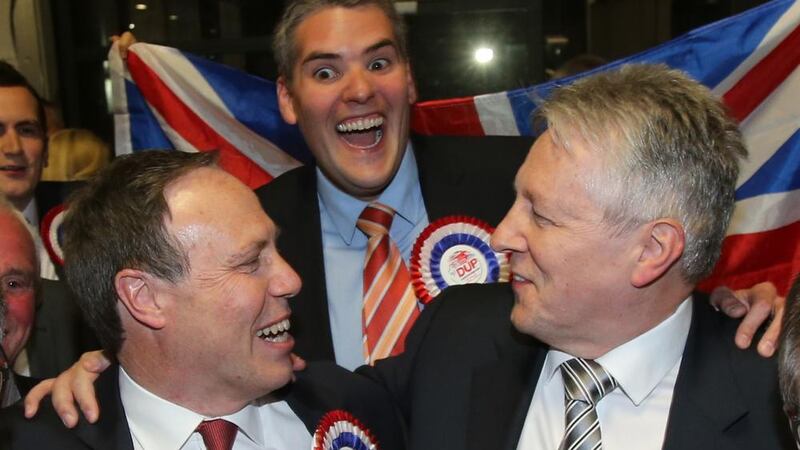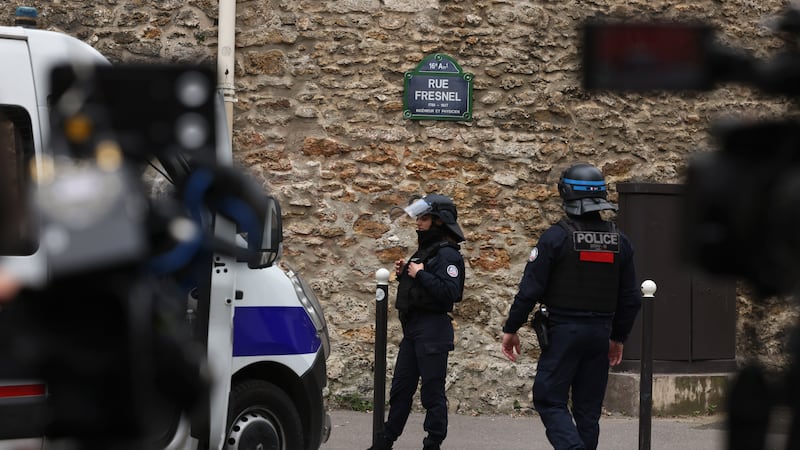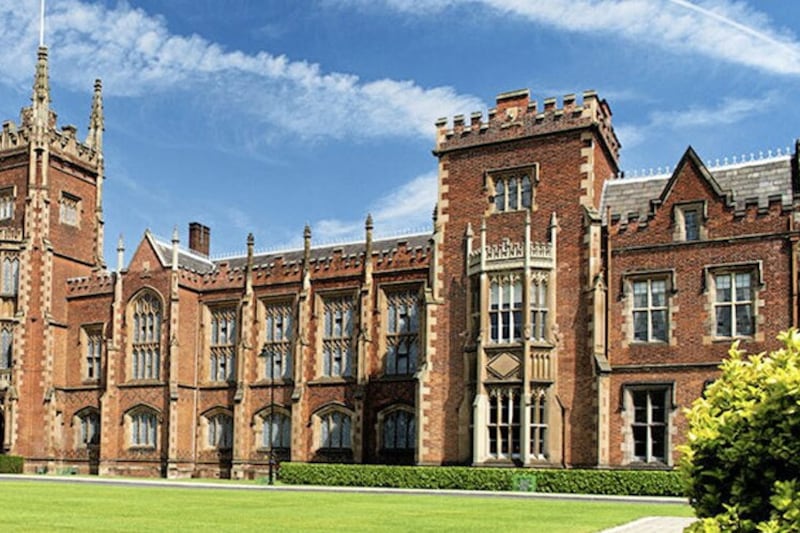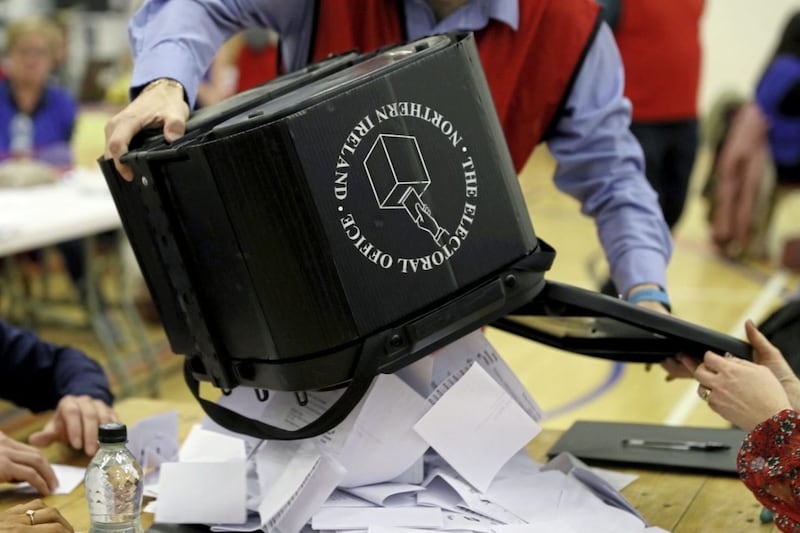TURNOUT amongst nationalist voters is at its lowest level since before the IRA ceasefire, election figures show.
The combined Sinn Féin and SDLP share of the vote has fallen below 40% for the first time in a Westminster poll since 1992.
Despite a higher overall turnout on Thursday compared to 2010, the results mean that the two main nationalist parties have lost almost 7,000 votes in just five years.
Last summer’s council and European elections signalled the first warning signs for the parties, with their share of the vote dipping to 37-38% for the first time in any election since the Assembly vote held in the wake of the Good Friday Agreement in 1998.
In stark contrast, the share of the unionist vote in the Westminster contest, when parties such as the TUV and the Conservatives are included, has increased by over 5% since 2010.
The three main unionist parties, UUP, DUP and TUV, proved much more successful in galvanising their electorate on Thursday, adding 18,324 votes to their total from five years ago.
Just 38.4% of the electorate opted for either Sinn Féin or the SDLP, down from a high of 42.7% in the 2001 election.
Nationalist commentator and blogger Chris Donnelly said both the SDLP and Sinn Féin need to urgently analyse the figures.
"They need to conduct their own inquiries about the malaise which exists within nationalist communities.
"If you look at the unionists, they put on thousands of votes in this election. For example, Nigel Dodds has opened up a massive gap over Gerry Kelly. But it wasn’t just in North Belfast."
While unionists of all shades rallied around a single candidate in several constituencies, there is no similar sense of unity amongst nationalists and republicans, according to Mr Donnelly.
"Nationalism is suffering a retreat here. All strands of loyalism and unionism came in behind Dodds. But just look at Gerry Kelly and Paul Maskey, where an MLA seat is now there to be had for People Before Profit in west Belfast.
"There are a lot of disillusioned republican voters who like the idea of kicking Sinn Féin. There is a clear line of demarcation whereby dissidents would not vote for a Sinn Féin candidate, and in essence have no-one to vote for.
"The DUP have the whole Protestant/Unionist/Loyalist community together on certain issues, defined by Twaddell, unlike nationalism."
The commentator added that while the possibility of a Sinn Féin shock had been floated in Upper Bann, neither Catherine Seeley nor the SDLP’s Dolores Kelly made any significant progress.
The trend in voting patterns was not lost on unionists in the aftermath of the election, with DUP North Antrim MLA Paul Frew taking note on Twitter.
Mr Frew said: "Nationalist/republican voter turnout down! DUP strategy working with unionists gaining confidence."
-----------------------------
COMBINED SF/SDLP VOTE IN WESTMINSTER ELECTIONS:
2015: 38.4%
2010: 42%
2005: 41.8%
2001: 42.7%
1997: 40.2%
1992: 33.5%








